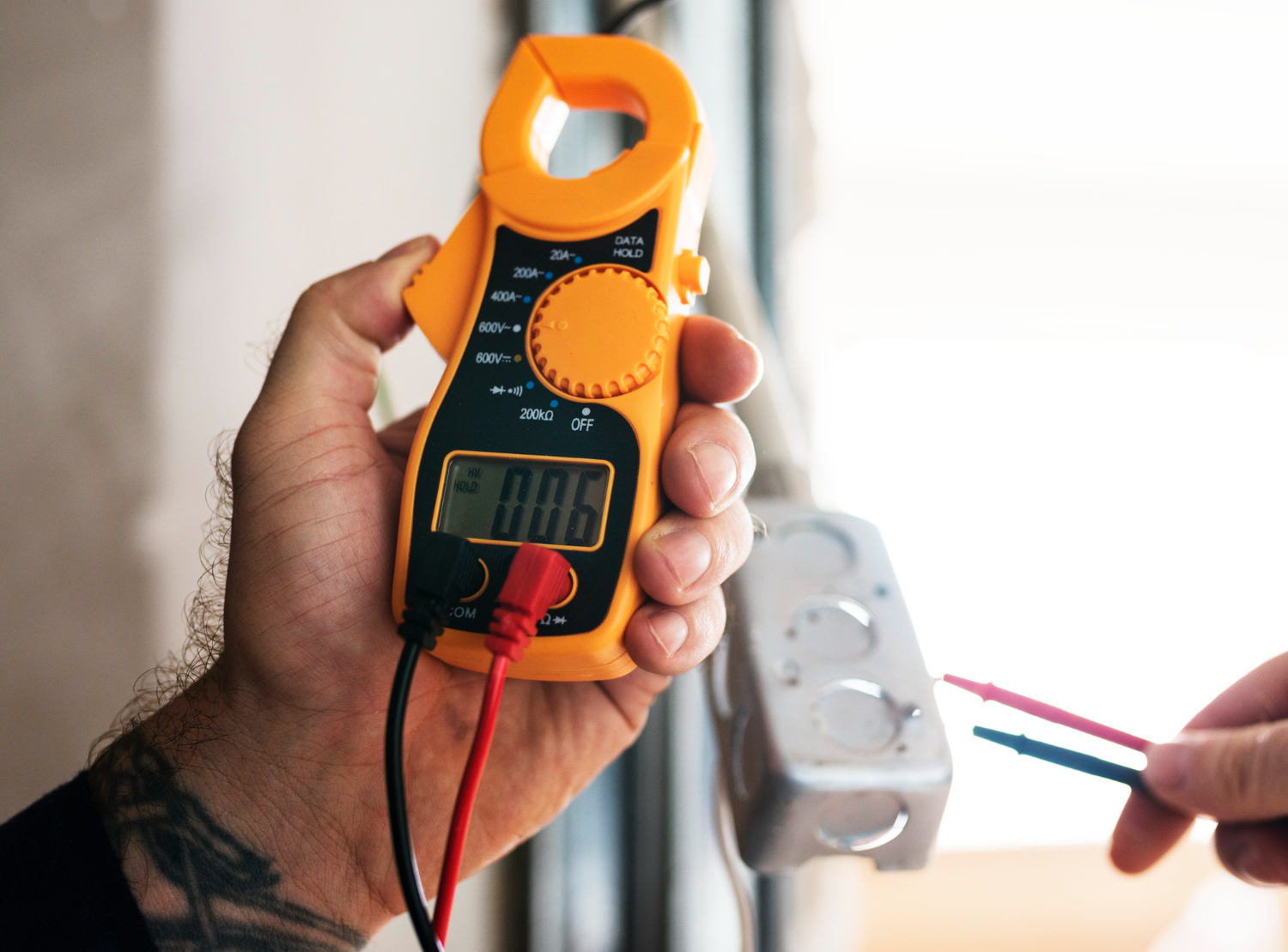Call this Friday to Get 10% OFF (Maximum $100 Off)
Call this Friday to Get 10% OFF (Maximum $100 Off)
24-Hour Emergency Electricians in Greer
Call this Friday to Get 10% OFF (Maximum $100 Off)
Call this Friday to Get 10% OFF (Maximum $100 Off)
24-Hour Emergency Electricians in Greer

Circuit breakers play a vital role in protecting residential and commercial buildings against short circuits and overloads. If you experience frequent electrical issues, having a trusted electrical service provider on hand can give you peace of mind. However, DIY enthusiasts may opt for a more proactive approach to diagnosing the problem before calling a professional. At Mr. Electric, we can help you kick-start the circuit breaker repair process properly with a thorough digital multimeter test. Here’s a detailed guide to help you use this innovative device effectively and maintain optimal safety and efficiency in your building.
Circuit breakers are safety devices integrated into electrical systems to interrupt current during short circuits and overloads. This helps to protect your property from electrical hazards like fires, appliance damage, and other anomalies in current flow. When a circuit breaker trips, you can easily restore power by turning the switch back on at the main panel. However, recurring breaker trips indicate a more severe underlying problem that requires professional intervention.
Before undertaking electrical projects, it is crucial to ensure that you have the right tools for the job. With that said, make sure you have a multimeter, screwdriver, insulated gloves, and safety goggles. If you don’t have all the tools, hire certified electricians to help. Professionals have access to industry-grade equipment and are updated on safety regulations, ensuring compliance with local codes. Once you have the tools needed, follow these steps to ensure a seamless inspection.
As mentioned, safety is vital when undertaking electrical projects, and multimeter tests are no exception. Turn off all the lights and appliances connected to the circuit you want to test. Wear safety goggles and insulated gloves to protect yourself from any electrical hazards. The last thing you want is an electrocution or severe injury due to neglecting improper safety measures.
The next step is to access the circuit breaker panel using a screwdriver to remove the screws securing the cover of your breaker box or panel. Set the cover aside and ensure that you don’t touch any metal or wires inside the panel.
Before testing the breaker, set your multimeter to the appropriate voltage setting. Electrical service experts recommend a 120-volt AC (alternating current) for residential circuit breakers. Commercial buildings may require a slightly higher setting, so consult a professional electrician to avoid inaccurate readings and other hazards.
When testing a circuit breaker, place one prong of your multimeter on the terminal screw and the other on the neutral bar in the panel. A functional breaker should read close to 120 volts for residential buildings. If the reading is significantly lower than 120 volts or zero, it might be time for circuit breaker repair or replacement.
After the initial reading, double-check the results by testing the circuit breaker again. Sometimes, a malfunctioning multimeter or poor contact can cause inaccurate readings. If the issue persists, call local electricians in Greer, SC to test the breaker, diagnose the problem, and recommend the best course of action.
Now that you know the steps to test a circuit breaker using a digital multimeter, you can troubleshoot issues quickly before the technician arrives. Some of the telltale signs your circuit breaker needs attention include frequent tripping, burn marks or smell, and a worn appearance. If you detect these signs, do not hesitate to call Mr. Electric for accurate diagnosis and long-lasting solutions. Contact us today and schedule a consultation with our technicians to ensure your electrical system is in top shape.
Rental properties hide more surprises than many new landlords expect, and the biggest surprises tend to show up once the panel is opened…
Read More +A storm can sweep through a neighborhood without warning and remind people how fragile their home wiring really is. Mr. Electric works with…
Read More +Smart upgrades are exciting when you start planning them. You think about lights that come on when you need them, a thermostat that…
Read More +Storms can roll through quickly, causing serious damage to your home’s electrical system. One of the most common reasons behind these scenarios is…
Read More +